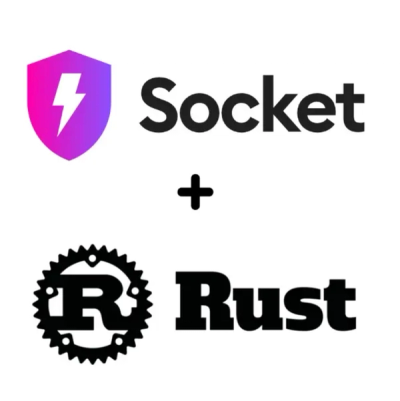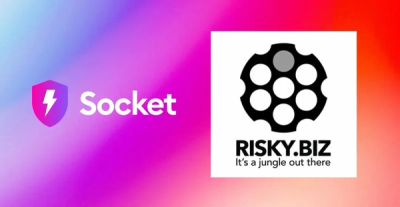
Product
Rust Support Now in Beta
Socket's Rust support is moving to Beta: all users can scan Cargo projects and generate SBOMs, including Cargo.toml-only crates, with Rust-aware supply chain checks.
three-universal
Advanced tools
Versions of Three.js compatible with Browsers, NodeJS, React Native Threads, etc by using JSDOM when needed.
This package provides the original builds and examples of three.js along with NodeJS specific builds and NodeJS specific examples.
Let's write a textured scene to a gltf file in the browser and using NodeJS.
It's totally equivalent to using the standard "three" library.
import { GLTFExporter } from "three-universal/examples/jsm/exporters/GLTFExporter";
import { BoxBufferGeometry, MeshBasicMaterial, Mesh, Scene, TextureLoader } from "three-universal/build/three.module";
const exporter = new GLTFExporter();
const textureLoader = new TextureLoader();
textureLoader.load( `https://url-of-my-image.jpg`, function ( texture ) {
const scene = new Scene();
const box = new Mesh(
new BoxBufferGeometry(),
new MeshBasicMaterial( { map: texture } )
);
box.name = "box-test";
scene.add( box );
exporter.parse( scene, function ( gltf ) {
downloadJSON(gltf);
} );
}, undefined, function ( error ) {
throw error;
} );
Let's write a textured scene to a gltf file in the browser and using NodeJS.
Here we can use the file protocol to load a local file, and fs-extra's writeJson to write the scene locally. We could also use a regular link
to load a remote image.
import { GLTFExporter } from "three-universal/examples/node-jsm/exporters/GLTFExporter";
import { BoxBufferGeometry, MeshBasicMaterial, Mesh, Scene, TextureLoader } from "three-universal/build/three.module.node";
import { writeJson } from "fs-extra";
const exporter = new GLTFExporter();
const textureLoader = new TextureLoader();
textureLoader.load( `file://path-to-my-image.jpg`, function ( texture ) {
const scene = new Scene();
const box = new Mesh(
new BoxBufferGeometry(),
new MeshBasicMaterial( { map: texture } )
);
box.name = "box-test";
scene.add( box );
exporter.parse( scene, function ( gltf ) {
const path = `path-to-my-local-file.gltf`;
writeJson( path, gltf, {}, function ( data ) {
console.log("Scene written!");
} );
} );
}, undefined, function ( error ) {
throw error;
} );
Bellow is an example of how to use headless-gl library to leverage WebGLRenderer on NodeJs.
import { getOr } from "lodash/fp";
import gl from "gl";
import {
WebGLRenderer,
PCFSoftShadowMap,
WebGLRenderTarget,
LinearFilter,
NearestFilter,
RGBAFormat,
UnsignedByteType
} from "three-universal/build/three.node";
/**
* Create a renderer
*/
export const getRenderer = ({
height,
width
}: {
height: number;
width: number;
}): WebGLRenderer => {
// @ts-ignore
const canvas = {
width: width,
height: height,
addEventListener: event => {},
removeEventListener: event => {},
getContext: (contextType, attributes) => {
return getOr(null, contextType, {
webgl: gl(width, height, {
...attributes,
preserveDrawingBuffer: true
})
});
}
} as HTMLCanvasElement;
// Create the renderer
const renderer = new WebGLRenderer({
antialias: false,
canvas: canvas,
powerPreference: "high-performance"
});
renderer.shadowMap.enabled = true;
renderer.shadowMap.type = PCFSoftShadowMap; // default PCFShadowMap
// Let's create a render target object where we'll be rendering
const renderTarget = new WebGLRenderTarget(width, height, {
minFilter: LinearFilter,
magFilter: NearestFilter,
format: RGBAFormat,
type: UnsignedByteType
});
renderer.setRenderTarget(renderTarget);
return renderer;
};
So far, JSDOM doesn't support every object of the native DOM API. If one of the utils you intend to run transitively uses one object in the list below, you might encounter non-three.js related issues when running on NodeJS only.
List of currently unsupported DOM objects used by Three.js:
This development is open-sourced by Sterblue.
Join us at Sterblue Labs!
 !
!
When there is a new release of three at https://www.npmjs.com/package/three :
npm install && npm run build && npm run test-e2e-nodenpm publishTests can be done in only one environment, NodeJS. For in-Browser tests, please refer to the original repository.
First run npm install in ./test to install the required testing dependencies.
To run unit tests on NodeJS: npm run test-unit-node
To run end to end tests on NodeJS: npm run test-e2e-node
FAQs
JavaScript 3D library
We found that three-universal demonstrated a not healthy version release cadence and project activity because the last version was released a year ago. It has 2 open source maintainers collaborating on the project.
Did you know?

Socket for GitHub automatically highlights issues in each pull request and monitors the health of all your open source dependencies. Discover the contents of your packages and block harmful activity before you install or update your dependencies.

Product
Socket's Rust support is moving to Beta: all users can scan Cargo projects and generate SBOMs, including Cargo.toml-only crates, with Rust-aware supply chain checks.

Product
Socket Fix 2.0 brings targeted CVE remediation, smarter upgrade planning, and broader ecosystem support to help developers get to zero alerts.

Security News
Socket CEO Feross Aboukhadijeh joins Risky Business Weekly to unpack recent npm phishing attacks, their limited impact, and the risks if attackers get smarter.